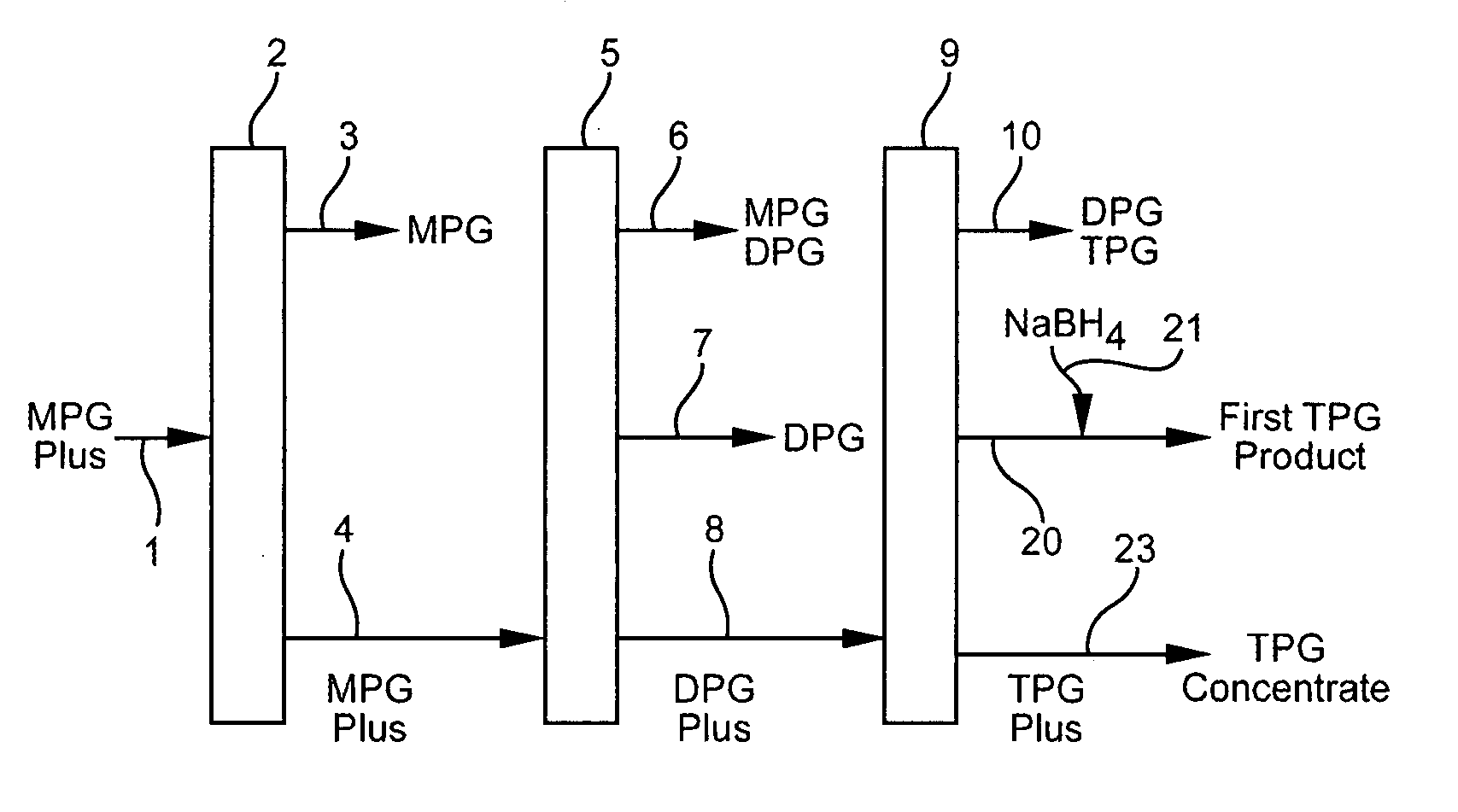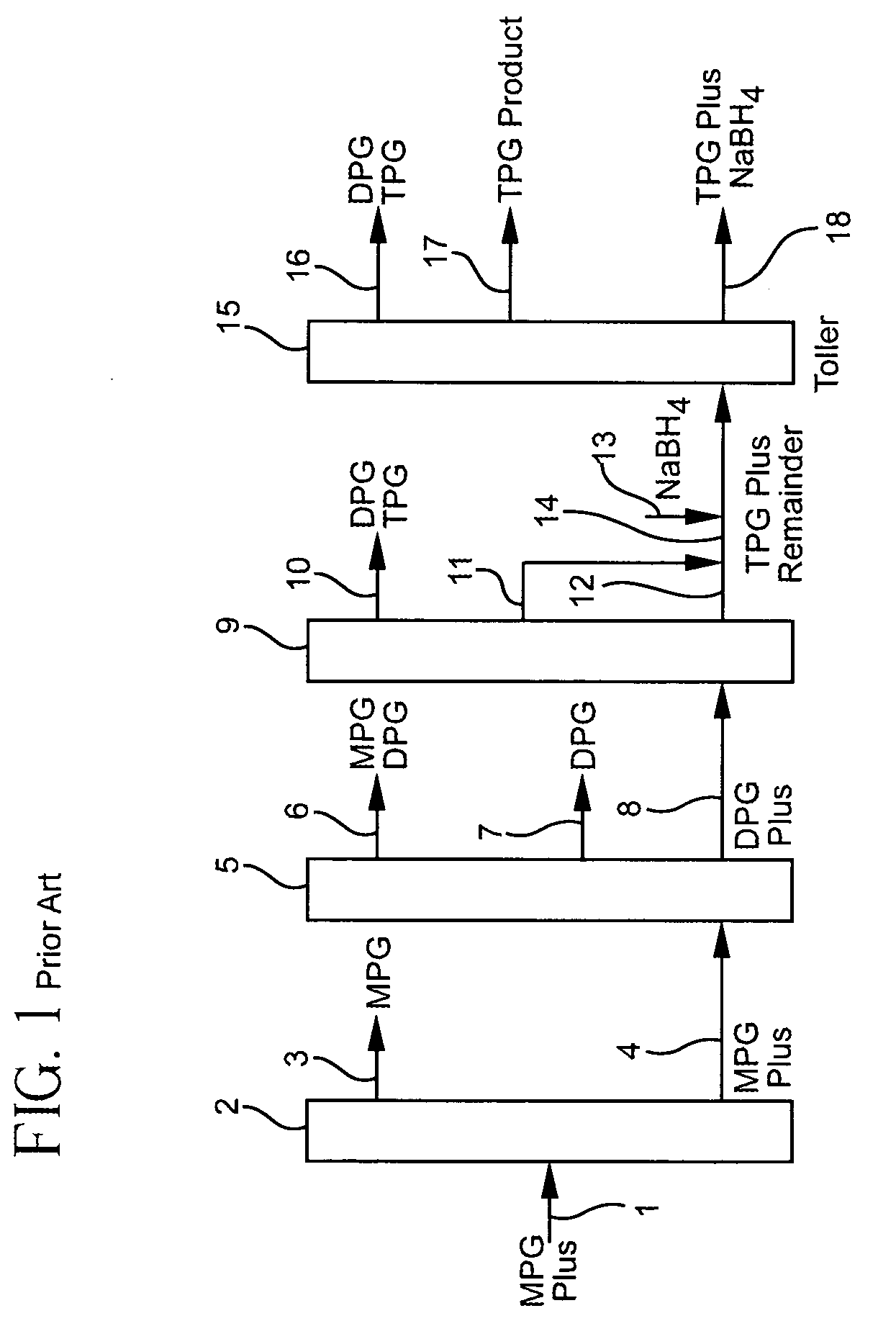Tripropylene glycol production
a technology of tripropylene glycol and production line, which is applied in the field of production of tripropylene glycol (tpg), can solve the problems that aldehydes can have an adverse effect on the clarity of acrylate products, and achieve the advantages of multiple manufacturing cost advantages, processing flexibility advantages, and distinct processing advantages
- Summary
- Abstract
- Description
- Claims
- Application Information
AI Technical Summary
Benefits of technology
Problems solved by technology
Method used
Image
Examples
example
[0035]A mixture of DPG, TPG, TTPG, glycols heavier than TTPG, and at least one aldehyde is subjected to distillation conditions in tower 9 of FIG. 2. Tower 9 is operated at less than 50 millimeters absolute pressure, and a bottom temperature of about 430° F. to produce an overhead 10 consisting essentially of a major amount of DPG and a minor amount of TPG. The material remaining in tower 9 after removal of the overhead consists essentially of about 96.1 wt % TPG, less than 0.1 wt % DPG, about 3.8 wt % TTPG and heavier glycols, and about 300 ppm aldehyde.
[0036]Under the distillation conditions aforesaid, physically separate and independent intermediate stream 20 is removed and consists essentially of TPG and 270 ppm aldehyde.
[0037]Sodium borohydride stream 21 is mixed with stream 20 under ambient conditions of temperature and pressure in an amount of less than 50 ppm wt %, which is sufficient to reduce the aldehyde content of that stream to less than 20 ppm and form the first produc...
PUM
| Property | Measurement | Unit |
|---|---|---|
| weight percent | aaaaa | aaaaa |
| weight percent | aaaaa | aaaaa |
| weight percent | aaaaa | aaaaa |
Abstract
Description
Claims
Application Information
 Login to View More
Login to View More - R&D
- Intellectual Property
- Life Sciences
- Materials
- Tech Scout
- Unparalleled Data Quality
- Higher Quality Content
- 60% Fewer Hallucinations
Browse by: Latest US Patents, China's latest patents, Technical Efficacy Thesaurus, Application Domain, Technology Topic, Popular Technical Reports.
© 2025 PatSnap. All rights reserved.Legal|Privacy policy|Modern Slavery Act Transparency Statement|Sitemap|About US| Contact US: help@patsnap.com



